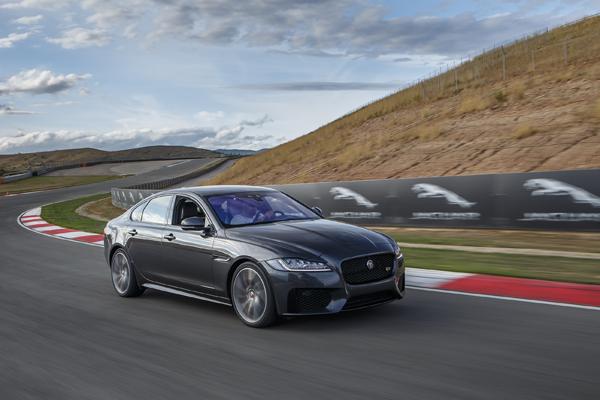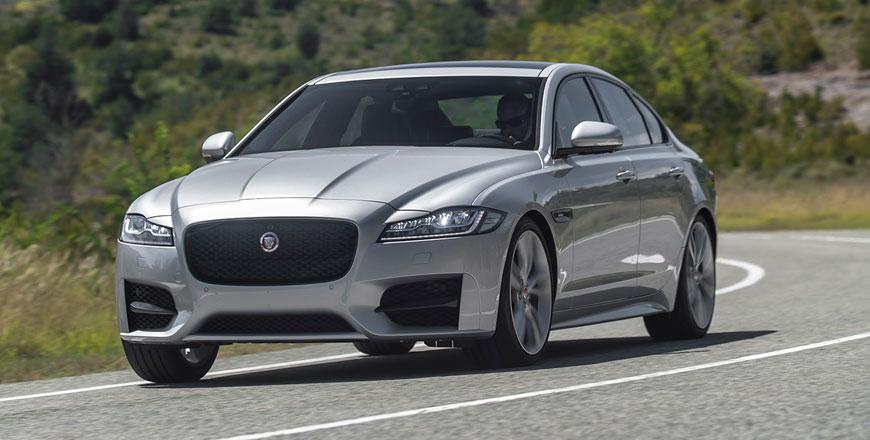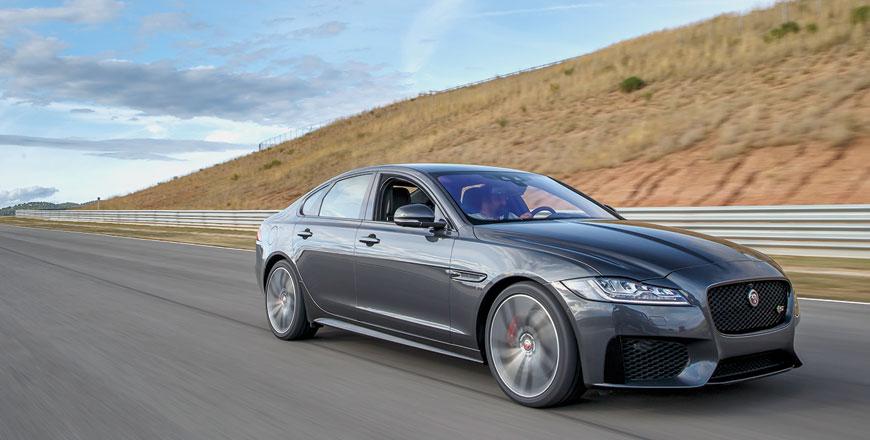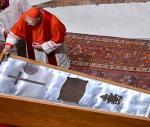You are here
Jaguar XF S 3.0 Sportbrake 3.0 V6: Stylish, spacious and swift
By Ghaith Madadha - Dec 03,2018 - Last updated at Dec 03,2018
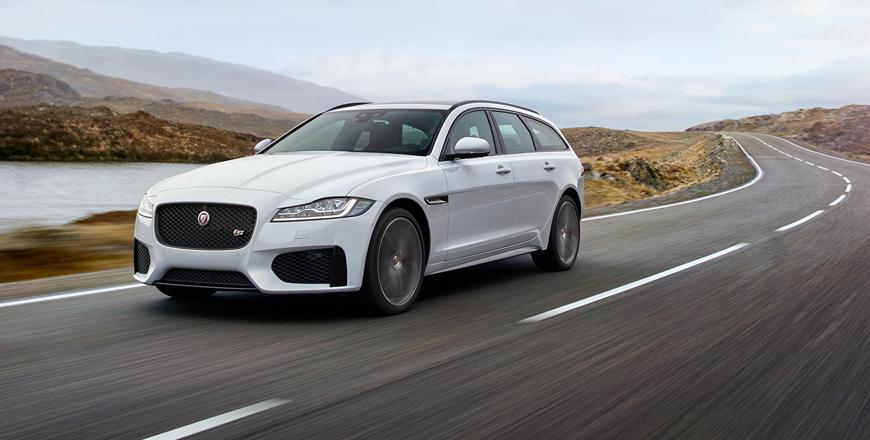
Photo courtesy of Jaguar
Arriving late last year and two years after its saloon car sister model, the Jaguar XF Sportbrake is the British manufacturer’s sporty premium executive segment estate riposte to estate stalwarts like the Audi A6 Avant and Volvo V90.
More popular in Europe, if not quite as popular in the Middle East and US, the estate offers the comfort, sporty handling and efficiency of a saloon car and the spacious, practical and versatile cargo carrying capacity of an SUV.
In the case of the highly accomplished Jaguar XF, the estate body Sportbrake version is even arguably better looking than its saloon equivalent.
The range-topping XF S Sportbrake version is, in the absence of a high performance SVR successor to the previous generation XFR-S or rival to the Audi RS6 Avant, the driven Supercharged 3.0 V6 AWD version is nevertheless a thoroughly brisk and sporting family car that captures Jaguar’s historic mantra of “space, pace and grace” like no other current model. Offered with standard all-wheel-drive like Audi and Volvo rivals with similar output, the XF S Sportbrake’s rear-wheel-drive derived platform and bias is more similar to wagon body versions of the Mercedes-Benz E-Class and, with its emphasis on sporty luxury, is perhaps conceptually closest to the BMW 5-Series Touring estate.
No longer a design afterthought as some estate cars were in the distant past, the XF Sportbrake “looks just as sporty as the saloon, if not more so”, even by Jaguar director of design, Ian Callum’s consideration, as quoted in press material. As svelte, eager and flowing from front view as its saloon sister, the XF Sportbrake’s high rise rear luggage compartment allows for a better flowing and more naturally extended roofline that hides its rearward heft. In turn, the taller rear and absence of a low rear deck seems to further emphasise the XF’s elegantly long bonnet and rearward cabin, and lends it a more urgent dynamic demeanour and more assertive road stance.
Snarling and smooth
Slung behind its big hungry mesh grille and under its bulging bonnet, the current top of the line XF S Sportbrake is powered by Jaguar’s sweet and familiar supercharged 3-litre V6 engine, driving all four wheels through a slick, quick and smooth shifting 8-speed automatic gearbox with a wide, yet, closely spaced ratio spread to maximise acceleration, mid-range pull, refinement and efficiency. Developing 375BHP at 6,500rpm in a swiftly progressive trajectory and underwritten by a 332lb/ft wallop of torque on tap throughout a broad and flexibly accessible mid-range peaking at 4,500rpm, the XF S Sportbrake is quick through 0-100km/h in 5.5-seconds and tops out at 250km/h.
Responding with immediacy off the line owing to its mechanically-driven supercharger in lieu of an exhaust-driven turbocharger like most modern cars, the XF S Sportbrake’ delivery is a consistent and insistent, with power building swiftly as revs rise and its smooth purr takes a more snarling and urgent tenor. Eager at top end and versatile throughout its rev range, the XF S Sportbrake’s wide and ever-willing mid-range torque band’s presence ensures indefatigable progress at speed and from low revs, but is mapped with a peaky delivery for a more sportingly involving character. As quick as it is on the move, the Sportbrake’s brakes meanwhile restrain its 1,835kg mass with reassuring efficacy.
Comfort and control
Driving with up to 100 per cent power going rewards and able to allocate up to 80 per cent frontwards when necessary, the XF S Sportbrake’s lightweight all-wheel-drive system employs a chain-driven transfer for efficiency. Operating with the balanced instincts and much the of at the limit adjustability of the well-sorted rear-wheel-drive saloon, it can, however, more effectively put power to tarmac for improved traction and grip, without corrupting the driving experience.
Better suited to the 375BHP XF S Sportbrake than the considerably more powerful F-Type SVR coupe and more subtle in how it works in dry and dusty conditions rather the wet, the XF’s light-touched all-wheel-drive allows for a reassuring, yet, delicately involving and intuitive drive through switchbacks.
Eager and fluent through winding roads, the XF S Sportbrake drives with sportily graceful handling qualities. Smooth and supple over most roads yet well containing body roll with its sophisticated double wishbone front and integral link rear self-levelling air suspension, the XF S Sport brake feels poised, balanced and involving for its segment. Eger on turn-in, agile and committed throughout, it nevertheless can playfully flick the rear out slightly to tighten a cornering line on request. Well-weighted and with eager self-centring, the XF’s steering delivers more nuanced, layered, textured feel and feedback, as it is light-handedly caressed through corners than is typical for premium executive cars.
Agile and accommodating
Fluent, fast and forgiving through snaking roads, the XF S Sportbrake combines comfort and control, and is built on light yet stiff aluminium-intensive frame yielding comfort, handling and safety benefits. Meanwhile on the motorway and at speed it proves resolutely stable, smooth and refined for long distances. Riding on large alloys and low profile 255/35R20 tyres, the XF S Sportbrake can be firm over sharp bracks and bumps, but its suspension otherwise well irons out imperfections and delivers buttoned down vertical and rebound control. For slippery surfaces, its All-Surface Progress Control leverages the traction control system, while torque vectoring selectively brakes individual wheels for added agility through corners.
Stylish and sweeping in silhouette, the Sportbrakes estate body allows for excellent versatility, and can accommodate a generous minimum 565-litre cargo capacity through its wide tailgate, which extends to a vast 1,700-litre maximum, with rear seats folded. Offering better rear headroom as an estate, the Sportbrake is comfortable, well-spaced and supportive for passengers, and includes an alert and adjustable driving position. Highly well equipped with standard and optional comfort, convenience, safety and driver assistance features, the Sportbrake’s cabin uses quality leathers, suede headliner, woods and soft textures. The driven car featured colder more business-like black and grey interior, but warmer, richer and more welcoming interior schemes are available.
TECHNICAL SPECIFICATIONS
Engine: 3-litre, supercharged, in-line V6-cylinders
Bore x stroke: 84.5 x 89mm
Compression ratio: 10.5:1
Valve-train: 24-valve, DOHC, continuously variable valve timing, direct injection
Gearbox: 8-speed automatic, four-wheel-drive
Ratios: 1st 4.714; 2nd 3.143; 3rd 2.106; 4th 1.667; 5th 1.285; 6th 1.0; 7th 0.839; 8th 0.667
Reverse/final drive: 3.317/3.23
Power, BHP (PS) [kW]: 375 (380) [280] @ 6,500rpm
Specific power: 112BHP/litre
Power -to-weight ratio: 204BHP/tonne
Torque, lb/ft (Nm): 332 (450) @4,500rpm
Specific torque: 150.25Nm/litre
Torque-to-weight ratio: 245Nm/tonne
0-100km/h: 5.5-seconds
Top speed: 250km/h
Fuel capacity: 74-litres
Length: 4,955mm
Width: 1,987mm
Height: 1,496mm
Wheelbase: 2,960mm
Track, F/R: 1,597/1,599mm
Boot capacity, min/max: 565-/1,700-litres
Kerb weight: 1,835kg
Suspension, F/R: Double wishbones/integral link, air springs
Steering: Variable electric-assisted rack & pinion
Brakes: Ventilated discs
Tyres: 255/35R20 (optional)
Related Articles
Launched late last year, the second generation Jaguar XF is a high-tech and focused executive saloon successor to the model that, in 2007, p
Launched globally in recent weeks, the second generation Jaguar XF picks up where its predecessor left off.
The car that launched Jaguar’s fresh contemporary design language in 2007, it seems not long ago that the XF succeeded the now defunct S-Typ


